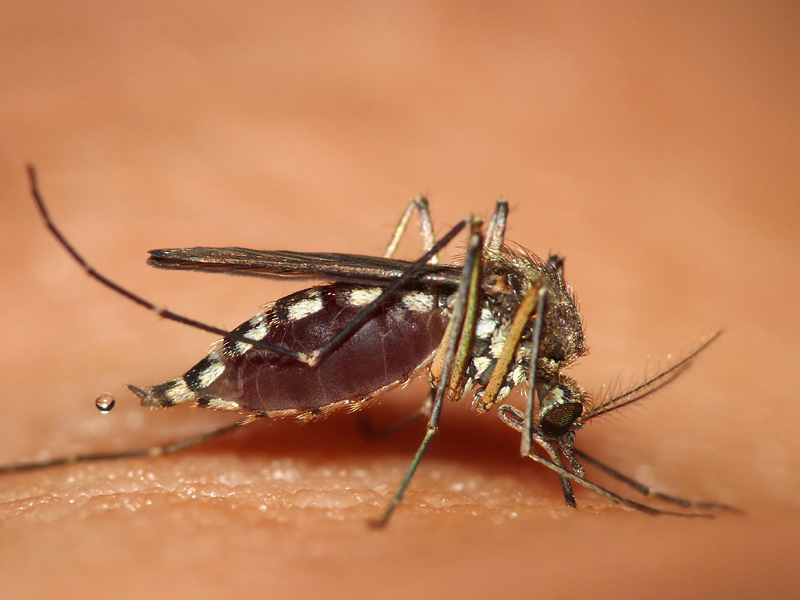Mark - I've got a story in this week's edition of Nature which is really a milestone in the battle against malaria, but it's also a milestone for science of synthetic biology. Now, this involves adding a genetic code to a living organism to get it to do something useful that it wouldn't ordinarily do. In this case, it's about engineering a yeast with an extra dozen or so genes to produce a precursor to a malaria drug. Seven years ago, Jay Keasling who's a Biochemist at the University of California in Berkeley showed that you could genetically engineer yeast to do this. Fast forward to a conference a couple of weeks ago in Nairobi, Keasling found out that for the first time, Sanofi which is a big pharmaceutical company has used this process to make 39 tonnes of artemisinic acid which is a precursor to the grade A best available malaria treatment out there.
Ben - That's not an insignificant amount of material they have made there.
Mark - It's huge. You could convert it to about 40 million treatments, something like that. So, that might be between 20 and 30% of the total number of treatments they've dispensed in a year.
Ben - How does that compare to more traditional drug manufacture technique?
Mark - Well, this is interesting thing about this. At the moment, the only source of artemisinin therapies which are the different types of molecules, all based on this stuff that are used in the drugs. The only source of it is the sweet wormwood plant Artemisia annua which is grown in places like China, in Vietnam. The fact that the only source of this drug comes from this plant has caused the market to be incredibly volatile for these drug compounds. The prices have fluctuated massively, supply has fluctuated massively, and it's partly because from growing the plant to producing the drug is an 18-month cycle, adding erratic donor funding, and it's made it very difficult to actually predict production. This new synthetic biology derived form of the drug, the idea here is that this will kind of smooth out those bumps in production of the drug.
Ben - Are we sure as well that it's identical, it's chemically identical to the drug that they would've made with the normal factory process?
Mark - Well, it is and at the moment, all the dossier of information is in with the World Health Organisation so that they can verify that that's the case. But it should be within months that they should sign off on that. So, it's feasible that we could expect to see malaria medicines made using this process in pharmacies in the developing world by the end of the year.
Kat - In theory, this is the kind of technique they should be able to work for also some other drugs that are derived originally from natural compounds as well.
Mark - In theory, that's right, Kat. This is something that people working in synthetic biology, this is one of the key things you can do. If you can find a microbe to make your drug, rather than going through many, many different chemical reactions to make potentially, you can make it more quickly and more easily. One of interesting things about this though is that the engineered yeast gets you so far, but it still requires four steps of good old traditional chemistry to actually take you on to the drug. So, they have to work hand in hand.
Dan - Drug companies are often a bit shy of spending a lot of money developing things for diseases like malaria. Are they going to make the effort this one?
Mark - Well, one of the reasons that Sanofi did this and funny enough, everybody I spoke to about this story was quite happy to talk to me about this. Sanofi was a little harder to pin down and that's strange because they're doing an amazing thing that could help millions of people. It's interesting. A lot of the money to come up with the development of the process has come from charitable funding from like the Gates Foundation and places like that. And more of the motivations for them, as well as looking good, that's a clear motivation that they're very affront about. It makes them look good. It potentially stabilises a market that they already feed into because Sanofi is one of the drug producers that buys in processed sweet wormwood plant to turn into the drug and it's hit by market fluctuations just like everybody else. So, it's looking for a way to stabilise that, but the other thing is, they've been given several million dollars by donor funders to develop a really neat bit of chemistry and a really neat bit of production level synthetic biology that they could then apply to other more commercially lucrative drugs. So for them, the interest is in being able to get some effectively free support to develop new in-house technology which is then there's. That's their proprietary technology in there.
- Previous Fish on Pharmaceuticals
- Next DNA break-up ages eggs in ovaries










Comments
Add a comment